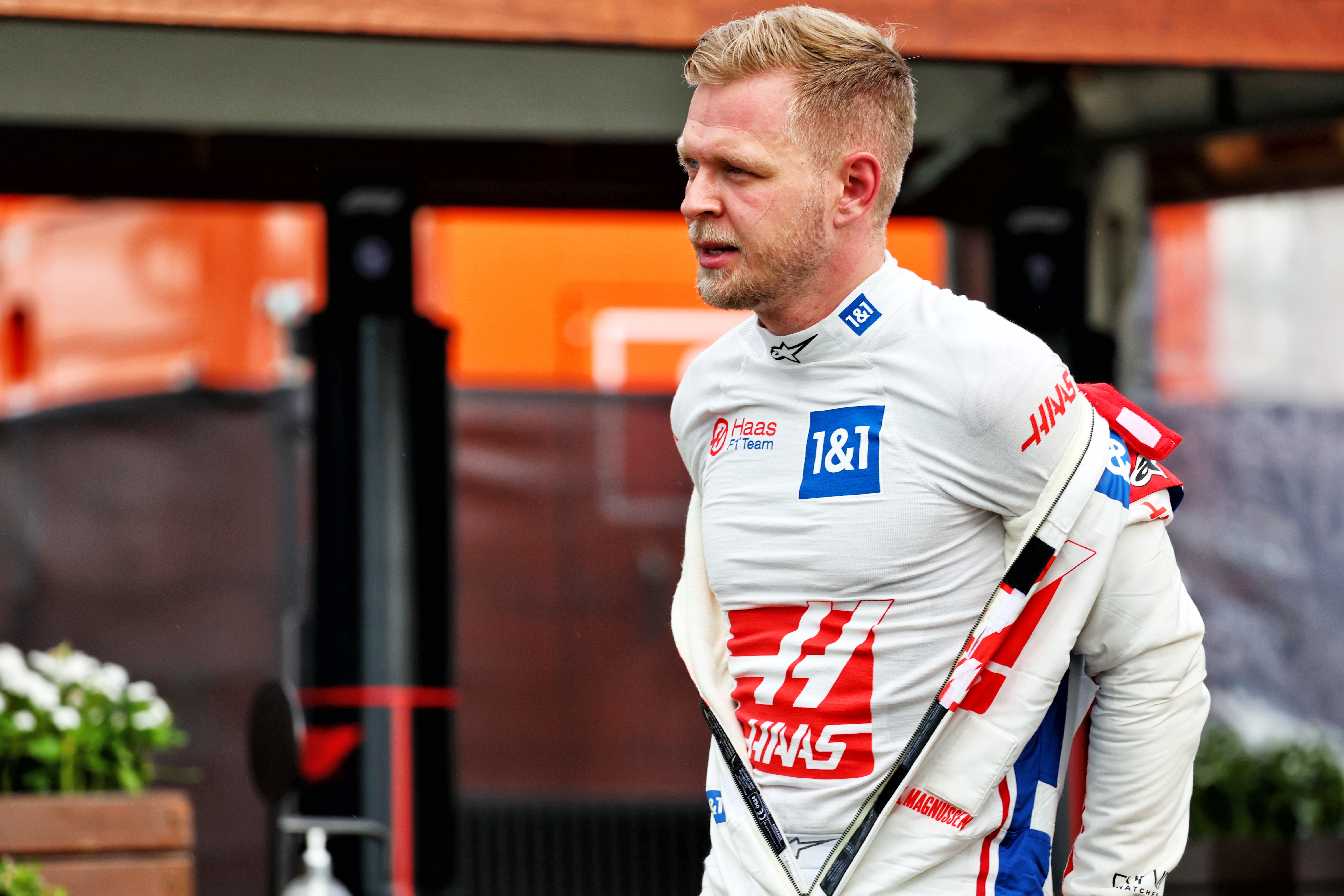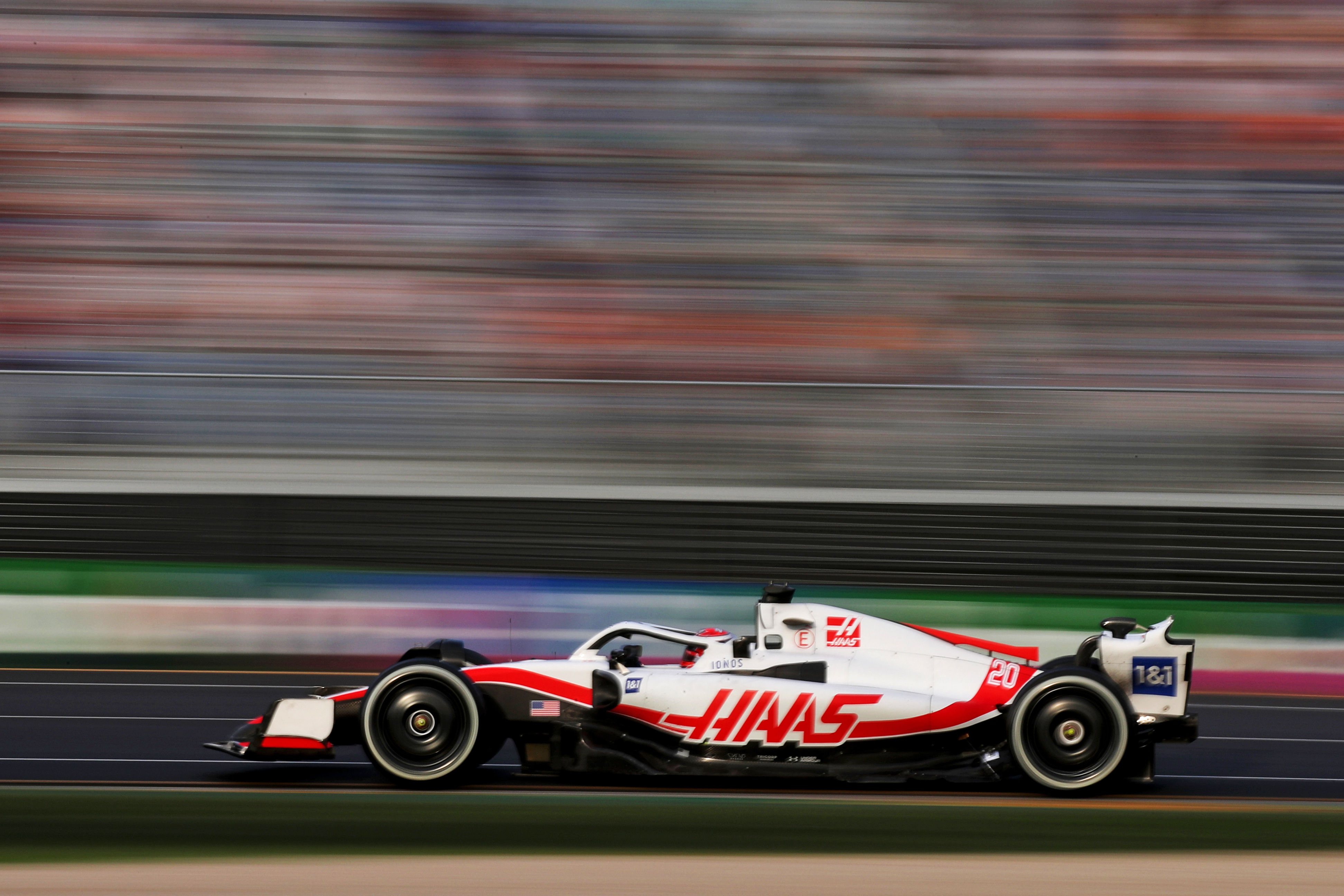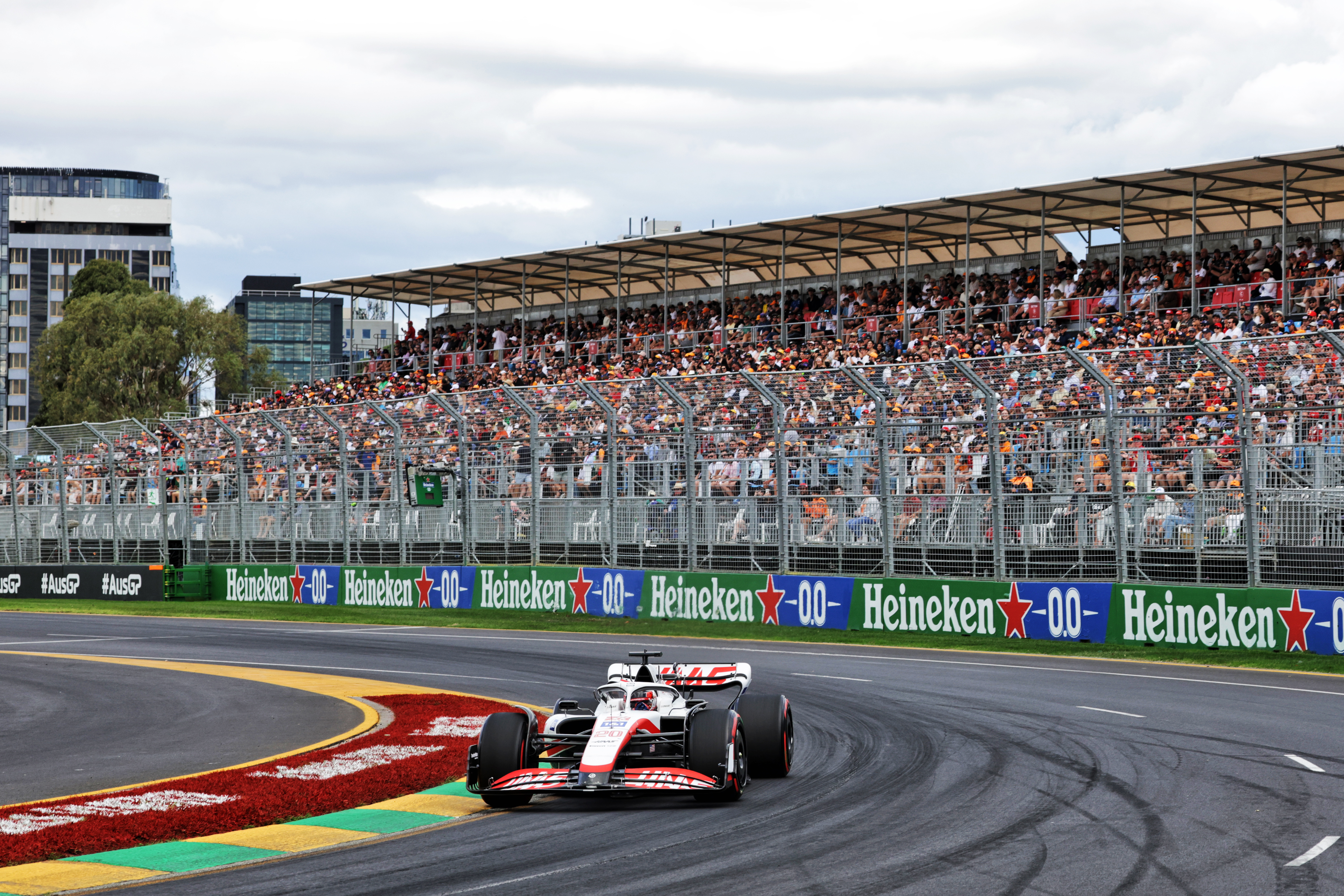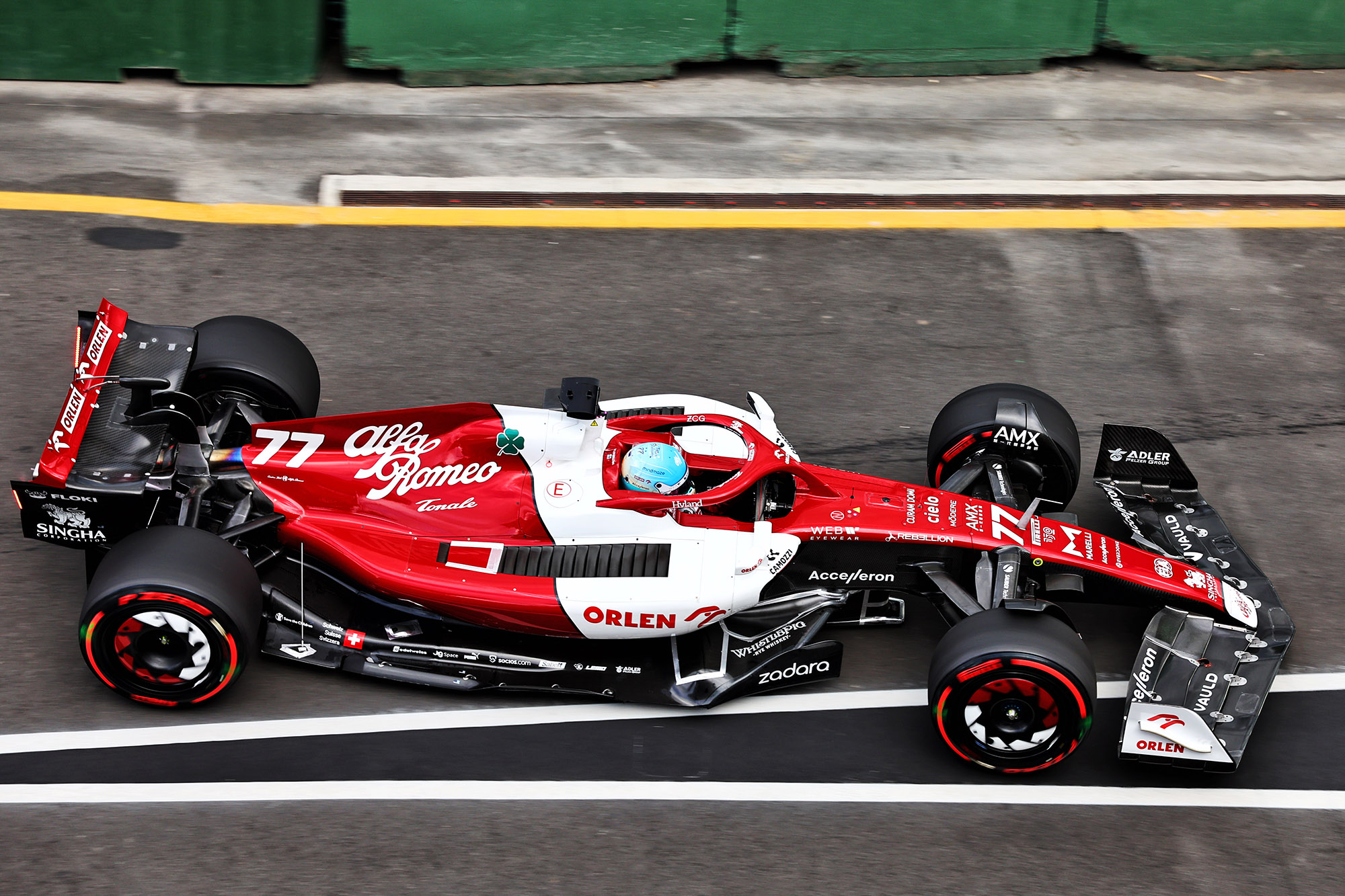Ferrari’s Formula 1 customers Haas and Alfa Romeo had enjoyed a far more fruitful opening two races fighting at the front of the midfield after propping up the order last year.
But in qualifying for the Australian Grand Prix, neither of 2022’s leading underdogs so far were able to make an impression on the top 10.
A combination of a poor start-of-weekend baseline set-up and tyre troubles, potentially both the consequence of the resurfacing of the Albert Park circuit, were to blame for neither Haas driver managing better than 15th in qualifying according to Kevin Magnussen.
Magnussen, who finished fifth in Bahrain then ninth in Saudi Arabia, failed to reach Q1 and ended up 16th after the exclusion of Williams driver Alex Albon, with team-mate Mick Schumacher outqualifying him for the first time but unable to manage better than 15th.
The lead Haas was 1.2-1.4s off pole position pace in the first two races of the season, but its fastest lap during qualifying – Schumacher in Q1 – was 2.236s down.
“We didn’t nail the start set-up for this track,” said Magnussen. “It was a bit different to what we expected.
“I guess we expected it to be kind of similar to the old track, but it’s actually fairly different. I just think we missed the starting set-up and then had a pretty long way to go to get to a good spot with the car.
“I think we found it, sort of. We got close to it in qualifying but then qualifying was a mess with the red flag and I was out in Q1.”

The Q1 red flag, caused by the collision between Lance Stroll and Nicholas Latifi, interrupted Magnussen’s second run before he could have a second push lap on his second set of tyres. His first attempt on the second run was his best, but compromised by the front tyres not being up to temperature at the start of the lap.
Although Magnussen did get to complete a lap after the red flag, the tyre preparation was compromised and he couldn’t improve, meaning he ended up behind both Schumacher and Albon – neither of whom went quicker after the red flag.
Magnussen suggested the unique surface, the consequence of a newly-resurfaced track offering a low level of grip that there was not the opportunity to water-blast before it was used, meaning there’s still plenty of bitumen on the surface, was the key to the problems.
Although the use of the track by F1 and the many support categories running on the Australian GP bill has had an effect on the evolution of the track, high-pressure water treatment ages the surface much more rapidly.
“Maybe the surface is a little unique,” said Magnussen. “They resurfaced it and sometimes when the tarmac is new, it can be a bit funny.
“But obviously we were sort of hit harder than other teams this weekend. But still, we made some progress and I don’t think we are as far off as our qualifying position shows, but certainly not as competitive as Bahrain and Jeddah.

“You’re not going to go through a whole season without having some weekends tougher than others. And this is one of the this is one of them.”
Team principal Guenther Steiner described the weekend as being one of an accumulation of problems.
In addition to the tyre struggles, Magnussen’s Friday illness meant he was not at his best for the first day of practice while Schumacher lost track time with a broken anti-roll bar link in the rear suspension.
“The whole weekend was just little things, starting with Kevin not being well yesterday and having a problem with the rear suspension on Mick.
“Then we just didn’t get the tyres to work properly, the C5s didn’t switch on.
“ A lot of people out there struggled with the car being unpredictable and I think it’s just one of those weekends where you say, what was wrong? I don’t really know but everything a little bit.
“It just was not a good execution of a weekend. But the main issue was the tyre, we couldn’t get it in the right spot that worked the C5.”

Despite its superb start to the season, Haas remains F1’s smallest team and it’s possible that its simulation resources fall short of the leading teams – hence the struggle to anticipate the track surface and produce the right start-of-weekend set-up.
Steiner accepted that the big, experienced teams do have an advantage in that area, but doesn’t believe it reflects a weakness of his team.
“I would say the big teams just have got so much more experience,” said Steiner when asked if he felt failing to nail the starting set-up was a Haas weakness.
“And I think that the simulation input we gave it with the new tarmac wasn’t the right one for the grip level on the simulation and therefore we ended up in the wrong spot to start off with.
“Obviously, we don’t have the resources the other ones have, but our simulation group is pretty good. I wouldn’t say that they did a bad job.
“It’s just some things you just need to find out that it was a new surface and maybe we didn’t have enough data from it and therefore we got it wrong.
“But I wouldn’t say that we have got a weak simulation department, I think there are actually good people there.”

Haas wasn’t the only star performer from Bahrain to slip back in Australia, with Alfa Romeo duo Valtteri Bottas and Zhou Guanyu 12th and 14th in qualifying.
Team principal Frederic Vasseur ascribed this to the fact “we took some decisions in relation to the direction of our set-up that we knew would penalise us a bit today”.
Bottas said that the team deciding to run a smaller rear wing as a result of the late decision by the FIA to remove the DRS zone on the run to Turn 9 played a part, as it should benefit Alfa Romeo in battle in the race at the expense of qualifying speed.
“We were not fast enough,” said Bottas of the reasons for his failure to reach Q3 for the first time since the 2016 Abu Dhabi Grand Prix – his last race for Williams prior to joining Mercedes.

“I had two good laps in Q2, the first run, then the second run was OK but just not quick enough, maybe missing a few tenths. It was a bit surprising, because I really thought we should be in Q3.
“The only reason I can think of now is that we opted for a smaller wing in my car after they changed the DRS zone.
“It make it better for the race, but for qualifying it made me pay a small price.”




